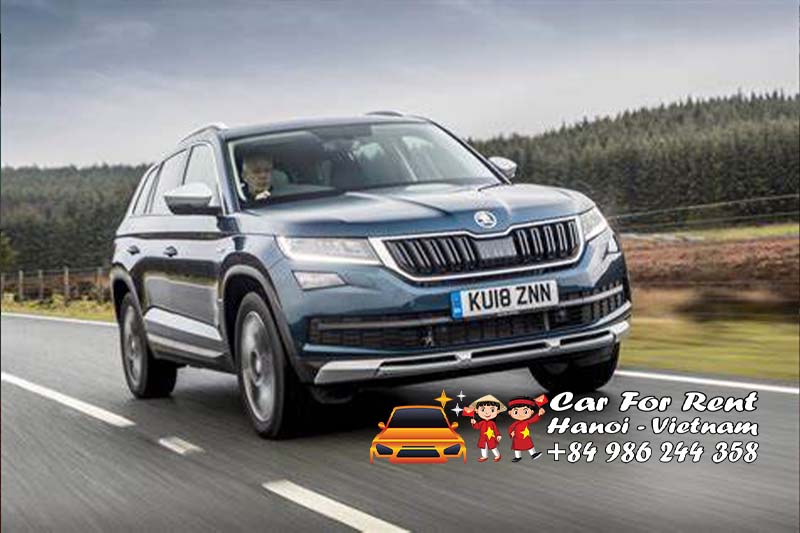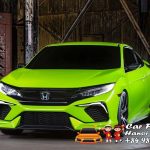best weather for vietnam travel Vietnam is a country that has a diverse and complex climate, which varies significantly from north to south and from season to season. Depending on where and when you want to travel in Vietnam, you might encounter different weather conditions and challenges. Therefore, it is important to know the best weather for Vietnam travel, so that you can plan your trip accordingly and enjoy your stay.
In this blog post, we will provide you with a guide to the seasons and regions of Vietnam, and help you choose the best weather for Vietnam travel. We will also give you some tips and advice on how to cope with the weather and make the most of your trip.
Seasons in Vietnam best weather for vietnam travel
Vietnam has four seasons: spring (February to April), summer (May to August), autumn (September to November) and winter (December to January). However, these seasons are not uniform across the country, as Vietnam has different climatic zones due to its long and narrow shape.

North Vietnam
North Vietnam (Hanoi, Halong Bay, Sapa, Mai Chau & Ninh Binh) has a clear winter and summer season. The winter is cold and dry, with temperatures ranging from 10°C to 20°C, and occasional drizzles or fog. The summer is hot and humid, with temperatures ranging from 25°C to 35°C, and frequent thunderstorms or typhoons. best weather for vietnam travel
The best weather for Vietnam travel in North Vietnam is in spring (February to April) or autumn (September to November), when the weather is mild and pleasant, with clear skies and moderate rainfall. These are also the best times to see the rice fields in their full glory, as they turn from green to golden during the harvest season.
Central Vietnam
Central Vietnam (Hue, Da Nang, Hoi An, Nha Trang, Da Lat & Phong Nha) has two seasons: dry (January to August) and wet (September to December). The dry season is warm and sunny, with temperatures ranging from 20°C to 30°C, and occasional showers or strong winds. The wet season is cool and rainy, with temperatures ranging from 15°C to 25°C, and frequent floods or landslides. best weather for vietnam travel

The best weather for Vietnam travel in Central Vietnam is in the dry season (January to August), when the weather is sunny and dry, with clear skies and calm seas. This is also the best time to enjoy the beaches, islands and coral reefs of Central Vietnam, as well as the cultural and historical attractions of Hue and Hoi An.
South Vietnam
South Vietnam (Ho Chi Minh City, Mekong Delta, Phu Quoc & Con Dao) has two seasons: wet (May to November) and dry (December to April). The wet season is hot and humid, with temperatures ranging from 25°C to 35°C, and heavy rainfall or thunderstorms. The dry season is warm and dry, with temperatures ranging from 20°C to 30°C, and occasional showers or breezes. best weather for vietnam travel
The best weather for Vietnam travel in South Vietnam is in the dry season (December to April), when the weather is warm and sunny, with clear skies and gentle winds. This is also the best time to explore the city life, the countryside and the wildlife of South Vietnam, as well as the tropical islands of Phu Quoc and Con Dao.

Regions in Vietnam
Vietnam has three main regions: North, Central and South. Each region has its own characteristics, attractions and activities that appeal to different types of travelers. Depending on your preferences and interests, you might want to focus on one region or combine two or more regions in your trip.
North Vietnam
North Vietnam is the region that offers the most diversity and contrast in Vietnam, with its mountainous landscapes, ethnic minorities, historical sites and natural wonders. Some of the highlights that you should not miss in North Vietnam are:
- Hanoi: The capital and cultural hub of Vietnam, where you can experience the old and new aspects of Vietnamese life, with its colonial architecture, ancient temples, bustling markets and modern museums. best weather for vietnam travel
- Halong Bay: A UNESCO World Heritage Site that features thousands of limestone islands and islets rising from the emerald waters of the Gulf of Tonkin, creating a stunning scenery that can be explored by boat, kayak or seaplane. best weather for vietnam travel
- Sapa: A mountainous town that is home to various ethnic groups, such as the Hmong, the Dao and the Tay, who live in traditional villages and cultivate terraced rice fields, offering a glimpse into their culture and lifestyle. best weather for vietnam travel

- Mai Chau: A valley that is surrounded by green hills and dotted with stilt houses, where you can enjoy the rural charm and tranquility of Vietnam, as well as the hospitality and cuisine of the local people. best weather for vietnam travel
- Ninh Binh: A province that is known as the “Halong Bay on land”, where you can admire the karst formations, caves, rivers and rice paddies that create a picturesque landscape that can be explored by bike, boat or foot.
Central Vietnam
Central Vietnam is the region that offers the most balance and harmony in Vietnam, with its coastal cities, sandy beaches, cultural heritage and natural beauty. Some of the highlights that you should not miss in Central Vietnam are:
- Hue: The former imperial capital of Vietnam, where you can discover the legacy of the Nguyen dynasty, with its citadel, tombs, temples and pagodas, as well as the distinctive cuisine and festivals of Hue. best weather for vietnam travel
- Da Nang: The third largest and most modern city in Vietnam, which is located on the coast between Hue and Hoi An, offering a blend of urban development and natural beauty, with its skyscrapers, bridges, beaches and mountains. best weather for vietnam travel
- Hoi An: A quaint and charming town that was once a prosperous trading port from the 15th to the 19th century, preserving the architecture and atmosphere of the past, with its wooden shophouses, lantern-lit streets, colorful markets and cultural festivals. best weather for vietnam travel

- Nha Trang: A coastal city that is famous for its beaches, islands and coral reefs, attracting sun seekers, water lovers and party goers, who can enjoy a variety of activities and entertainment options.
- Da Lat: A hill station that is located in the Central Highlands of Vietnam, offering a cool and pleasant climate, which makes it ideal for growing flowers, fruits and vegetables, as well as a romantic and nostalgic charm, with its French colonial architecture, pine forests, lakes and waterfalls.
South Vietnam
South Vietnam is the region that offers the most vitality and diversity in Vietnam, with its urban life, rural charm, tropical islands and wildlife. Some of the highlights that you should not miss in South Vietnam are:
- Ho Chi Minh City: The largest and most dynamic city in Vietnam, where you can experience the energy and diversity of Vietnamese society, with its skyscrapers, markets, museums, temples and nightlife.
- Mekong Delta: A vast area that is crisscrossed by the branches and tributaries of the Mekong River, forming a fertile and lush region that is known as the “rice bowl” of Vietnam, where you can explore the villages, farms, orchards and floating markets that showcase the rural life and culture of Vietnam.
- Phu Quoc: A tropical island that is located off the coast of South Vietnam, offering a paradise of white sand beaches, turquoise water, palm trees and coral reefs, where you can relax, swim, snorkel or dive.
- Con Dao: A group of islands that are located off the coast of South Vietnam, offering a secluded and natural experience, with its pristine beaches, dense forests, marine park and wildlife sanctuary, where you can enjoy some hiking, kayaking or wildlife watching.

Tips and Advice for Vietnam Travel
To make the most of your trip to Vietnam, you need to be prepared and informed about the weather and other factors that might affect your travel. Here are some tips and advice that can help you cope with the weather and enjoy your stay in Vietnam.
- Check the weather forecast and plan your itinerary accordingly. You might want to avoid traveling during the rainy season or the typhoon season, as they can cause delays, cancellations or disruptions to your travel. You might also want to avoid traveling during the high season or the Tet festival, as they can cause overcrowding, price hikes or shortages of accommodation or transportation.
- Pack appropriate clothing and accessories for the weather. You might need to bring warm clothes, jackets or scarves for the winter in North Vietnam, or raincoats, umbrellas or waterproof bags for the rainy season in Central or South Vietnam. You might also need to bring sun hats, sunglasses or sunscreen for the summer or the dry season in any region. You might also need to bring insect repellent or mosquito nets for the wet season or the rural areas in any region.
- Respect the local culture and customs. You might need to dress modestly and cover your shoulders and knees when you visit temples, pagodas or other religious sites. You might also need to remove your shoes when you enter houses or other places of worship. You might also need to avoid public displays of affection or criticism of the government or the history of Vietnam.
- Be flexible and adaptable. You might encounter some challenges or inconveniences or surprises during your travel in Vietnam, such as traffic jams, power cuts, language barriers or scams. You might need to be patient and tolerant, and try to see the positive side of things. You might also need to be open and curious, and try to learn from your experiences and interactions with the local people and culture.

Contact us:
Car For Rent Hanoi VietNam
https://zalo.me/0986244358
Conclusion
Vietnam is a country that has a lot to offer for travelers, with its diverse and complex climate, its varied and attractive regions, and its rich and vibrant culture. However, to enjoy your trip to Vietnam, you need to know the best weather for Vietnam travel, and how to cope with the weather and other factors that might affect your travel. In this blog post, we have provided you with a guide to the seasons and regions of Vietnam, and some tips and advice for Vietnam travel. We hope that this blog post has been useful and informative for you. If you have any questions or comments, please feel free to leave them below. We wish you a safe and happy trip to Vietnam.












